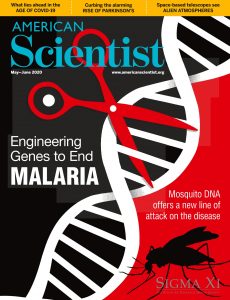
American Scientist – May-June 2020
English | 68 pages | pdf | 21.36 MB
At the time we are finishing this issue for publication, the global pandemic of COVID-19 has caused many of us to change our habits and to work together in an effort to stay apart and reduce transmission. The staff of American Scientist Magazine feel fortunate that we’ve been able to continue to work, and we know that many of the researchers among our readers are at the forefront of the efforts to confront this pandemic. We hope that the content in this issue helps to keep your mind active during social distancing. In addition, we encourage you to come together virtually and discuss any of the content of the issue with us and with other readers on our social media pages. We’re always interested in your feedback, and right now all forms of virtual connection are helpful.
In this issue’s Spotlight section, digital features editor and ecologist Katie L. Burke takes a direct look at COVID-19 (short for coronavirus disease 2019) and discusses with an epidemiologist what the future may hold for the novel coronavirus (“What Might Happen to COVID-19 Over Time?” on page 134). Unfortunately, COVID-19 isn’t the only transmissible disease that the world must worry about. Ethan Bier and Elliott Sober discuss ways that CRISPR gene editing might help combat the spread of malaria by making the mosquitoes themselves more resistant to spreading the parasite (“Gene Editing and the War Against Malaria,” pages 162–169). Bier and Sober provide a solid backgrounder on the gene drives behind CRISPR and also take a close look at the ethics of organism modification.
Also in this issue, Ray Dorsey and his colleagues present an update about Parkinson’s disease (“The Rise of Parkinson’s Disease,” pages 178–183). This neurological affliction is increasingly common, and the number of cases more than doubled between 1990 and 2015. Evidence points to preventable triggers for this disease, and the authors discuss what must be done to turn the tide.
Elsewhere in this issue, Julie Sperling, a mosaic artist with an environmental policy background, looks at ways that art can reengage those who feel disconnected from the human-induced changes to our world (“Depicting a Fragmented World,” Arts Lab, pages 154–157).
We hope that the wide range of topics this issue allows you to dive deep and consider each one more closely, while also introducing you to research outside of your own areas of expertise. Although we may have to distance socially for the good of all, let’s find ways to connect however we can.
—Fenella Saunders (@FenellaSaunders)
Download from: